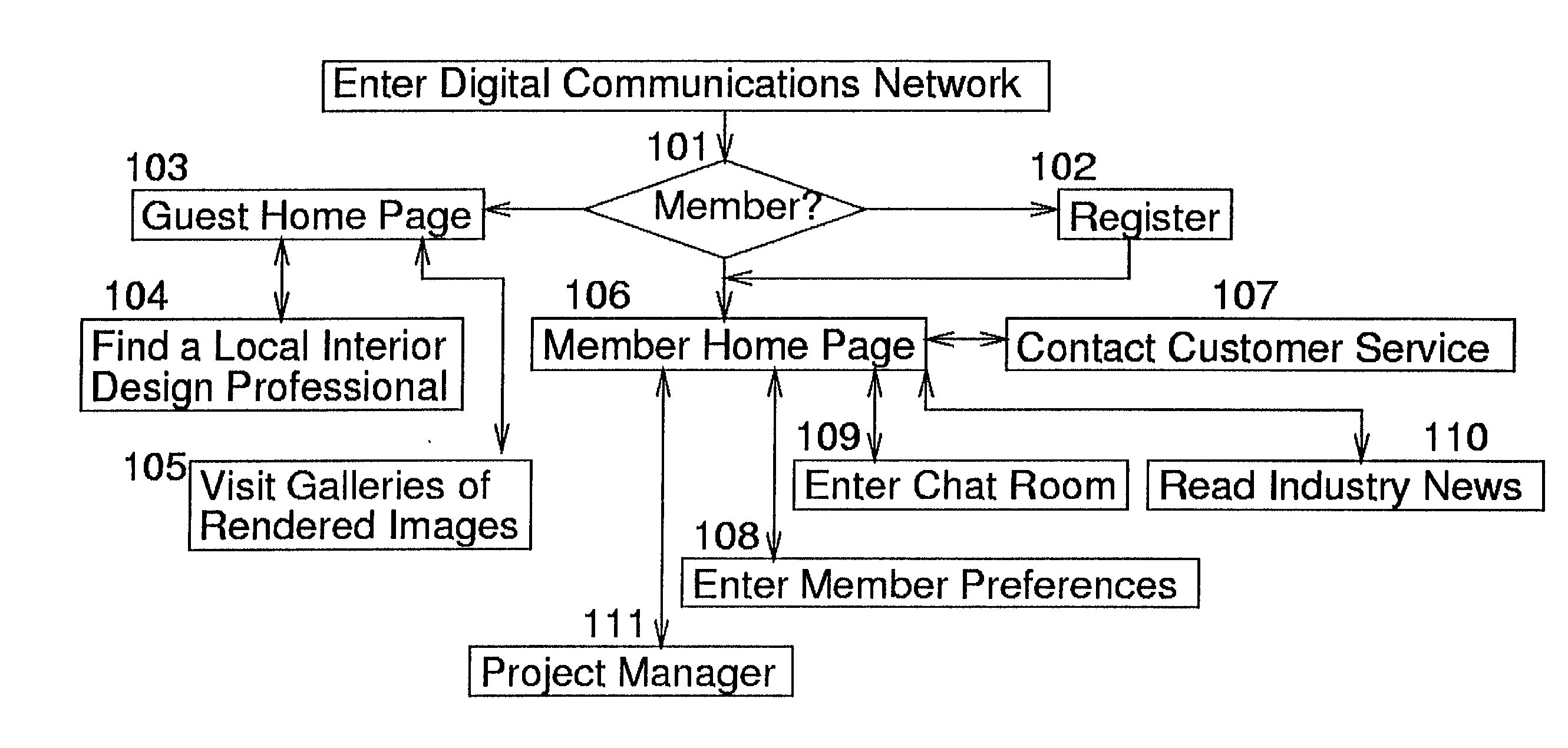Network-linked interactive three-dimensional composition and display of saleable objects in situ in viewer-selected scenes for purposes of object promotion and procurement, and generation of object advertisements
a three-dimensional, interactive technology, applied in the direction of instruments, static indicating devices, marketing, etc., can solve the problems of inability to map fabrics, inability to achieve object promotion and procurement, and inability to mitigate last limitation,
- Summary
- Abstract
- Description
- Claims
- Application Information
AI Technical Summary
Problems solved by technology
Method used
Image
Examples
Embodiment Construction
[0234] Referring now to the drawings, FIG. 1 is a flow chart illustrating information flow within a preferred embodiment of the present invention. This preferred embodiment is described in reference to a private furnishings merchandising system on the Internet. Using a Web3D browser, this system permits designer / sales associates of, for example, a major retailer, to support many aspects of their employer's business. These include identifying and selecting furnishings, creating realistic visualizations of furnished rooms, ordering swatches, preparing budgets, ordering furnishings, preparing invoices, tracking orders, staying abreast of industry news and chatting with colleagues.
[0235] Designers will be able to rapidly identify and select furnishings, place them into a 3-D perspective view or floor-plan view of a room model in the desired position along with decorative accessories, wall and floor coverings, and then rapidly render a photorealistic screen image of the completed room sc...
PUM
 Login to View More
Login to View More Abstract
Description
Claims
Application Information
 Login to View More
Login to View More - R&D
- Intellectual Property
- Life Sciences
- Materials
- Tech Scout
- Unparalleled Data Quality
- Higher Quality Content
- 60% Fewer Hallucinations
Browse by: Latest US Patents, China's latest patents, Technical Efficacy Thesaurus, Application Domain, Technology Topic, Popular Technical Reports.
© 2025 PatSnap. All rights reserved.Legal|Privacy policy|Modern Slavery Act Transparency Statement|Sitemap|About US| Contact US: help@patsnap.com



